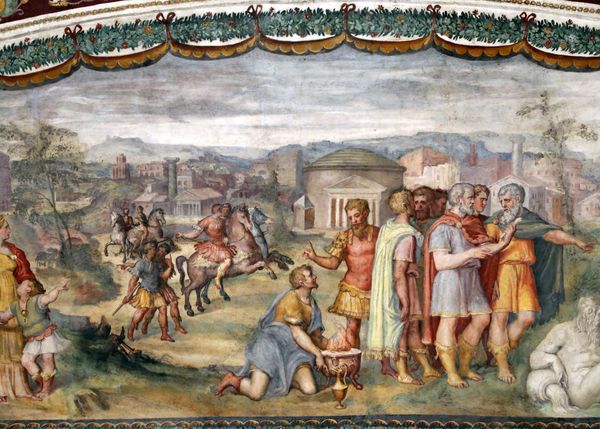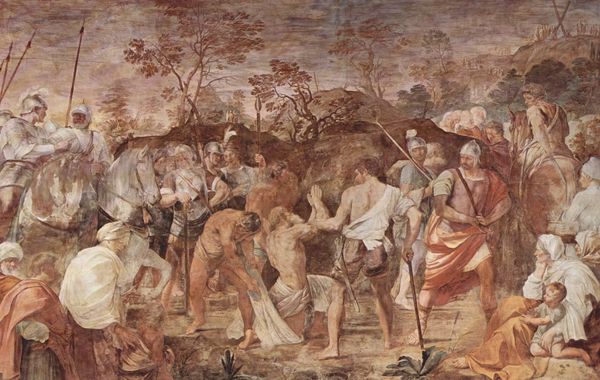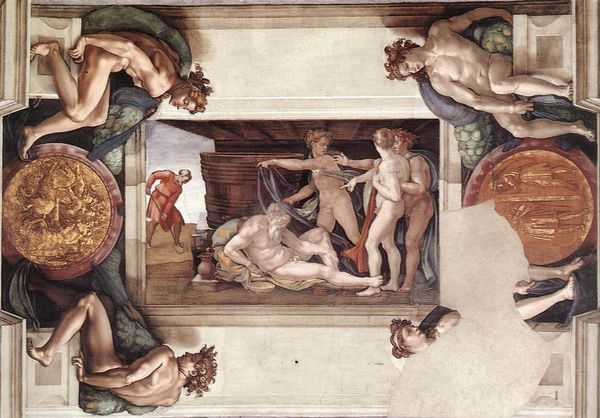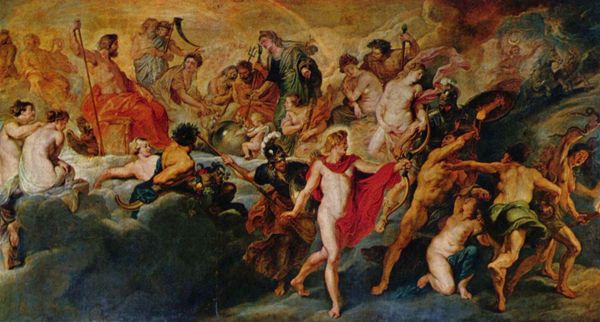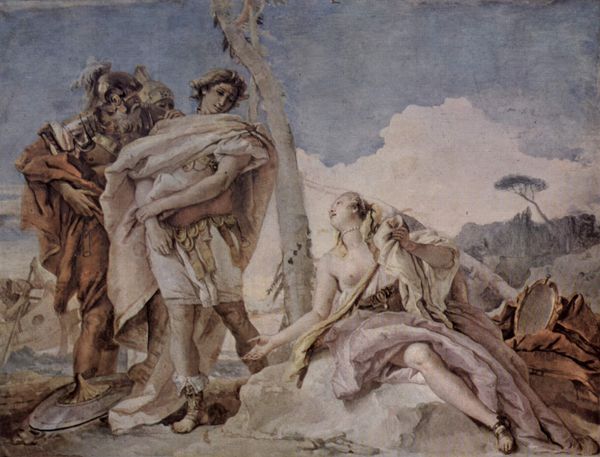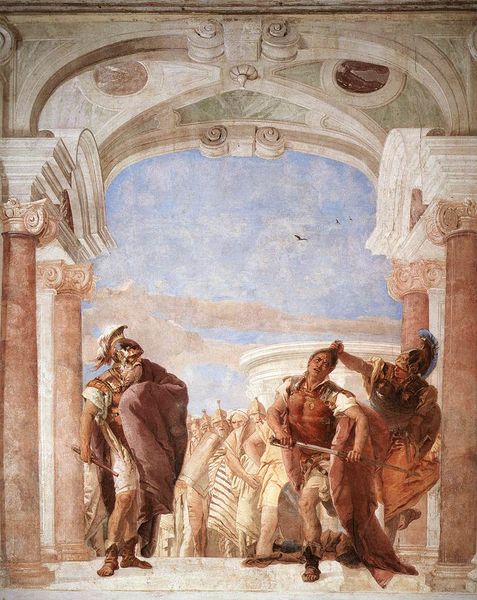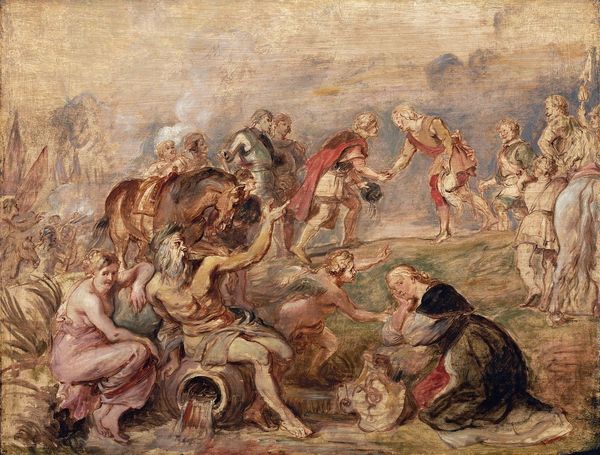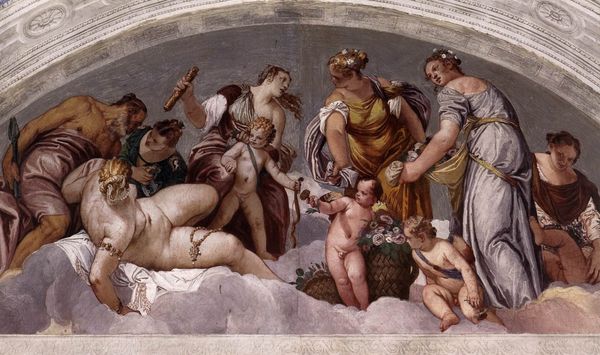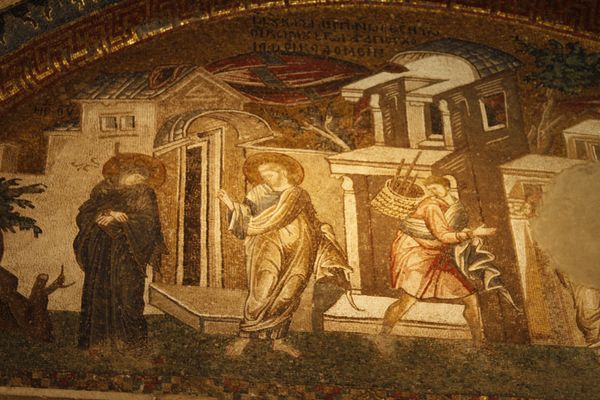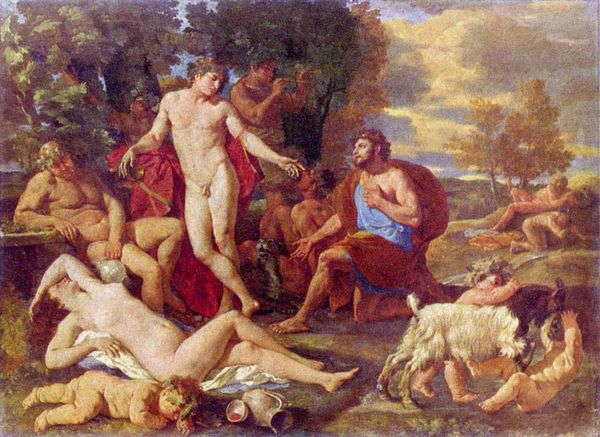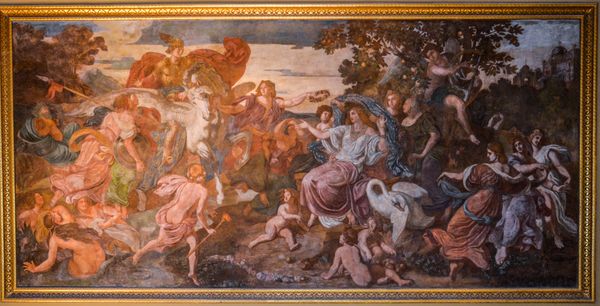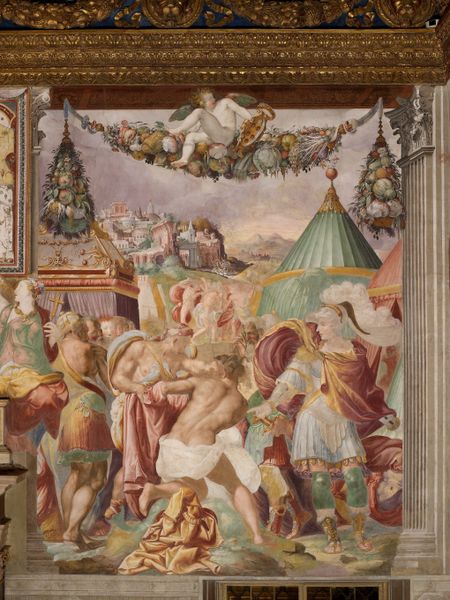
Stanza Di Apollo 1540
0:00
0:00
francescoderossifrancescosalviaticecchino
Palazzo Grimani di Santa Maria Formosa, Venice, Italy
painting, oil-paint, fresco
#
allegory
#
painting
#
oil-paint
#
mannerism
#
figuration
#
fresco
#
oil painting
#
mythology
#
history-painting
#
italian-renaissance
Copyright: Public domain
Editor: This is "Stanza di Apollo" by Francesco Salviati, painted in 1540. It’s an oil and fresco painting, currently housed in the Palazzo Grimani in Venice. The scene feels very classical to me, almost theatrical, with these figures arranged across the space. How do you interpret this work from a formalist perspective? Curator: Intriguing. Focusing on the internal elements, the artist skillfully balances disparate groups through calculated compositional devices. Observe the distinct left and right groupings counterposed around the sculptural, reclining figure that bisects the pictorial field. Do you perceive how this axial arrangement operates structurally? Editor: I see the separation, but it almost feels unbalanced with the denser group on the left. The right feels more open, lighter. Is that deliberate? Curator: Precisely. That very tension creates visual interest, avoiding static symmetry. Note, also, how Salviati uses color to unify this potentially fragmented composition. The ochre and yellows are echoed on both sides, drawing the eye across the surface. Editor: Yes, I see the unifying use of the warm tones now, especially in the clothing. It bridges the divide. The architectural background also looks… staged, almost like a set design. Curator: Exactly. Mannerism often employed such theatrical backdrops. Examine the figure’s exaggerated contrapposto, and the somewhat affected poses of the figures. How do these elements contribute to the overall impact? Editor: They seem to create a sense of artificiality. The figures are posed rather than natural, enhancing the dramatic feel. Curator: Precisely! By analyzing the interplay of composition, color, and figural arrangements, we unveil the self-conscious artifice that defines Salviati’s aesthetic approach. Editor: That’s fascinating. I initially focused on the surface-level narrative, but seeing the underlying structure gives it a whole new dimension. Curator: Indeed. Dissecting formal elements allows for more profound insights into a work's artistic intent and historical significance.
Comments
No comments
Be the first to comment and join the conversation on the ultimate creative platform.
